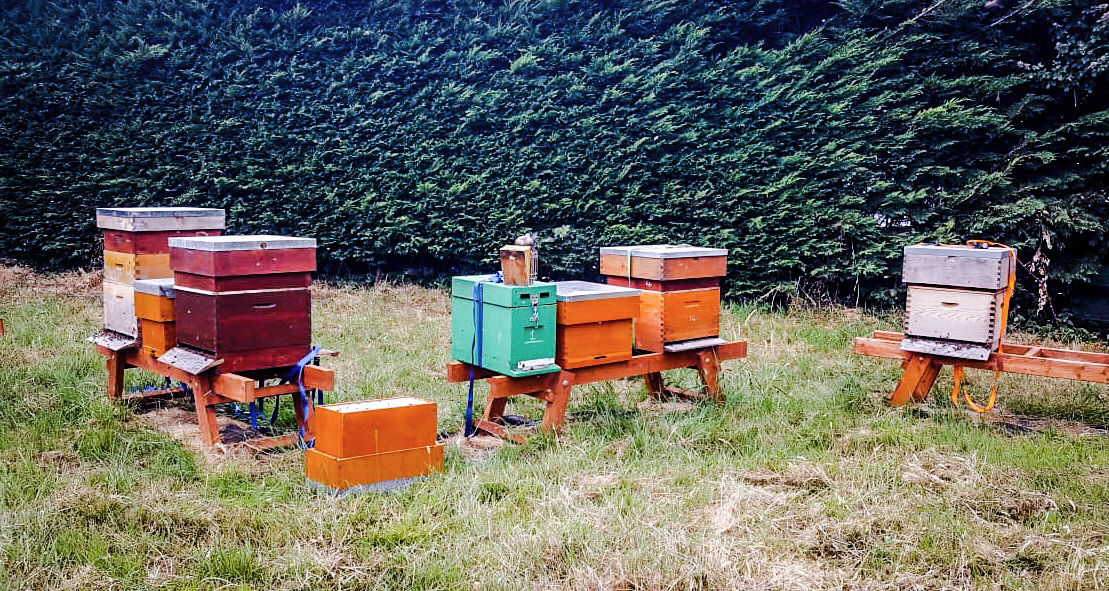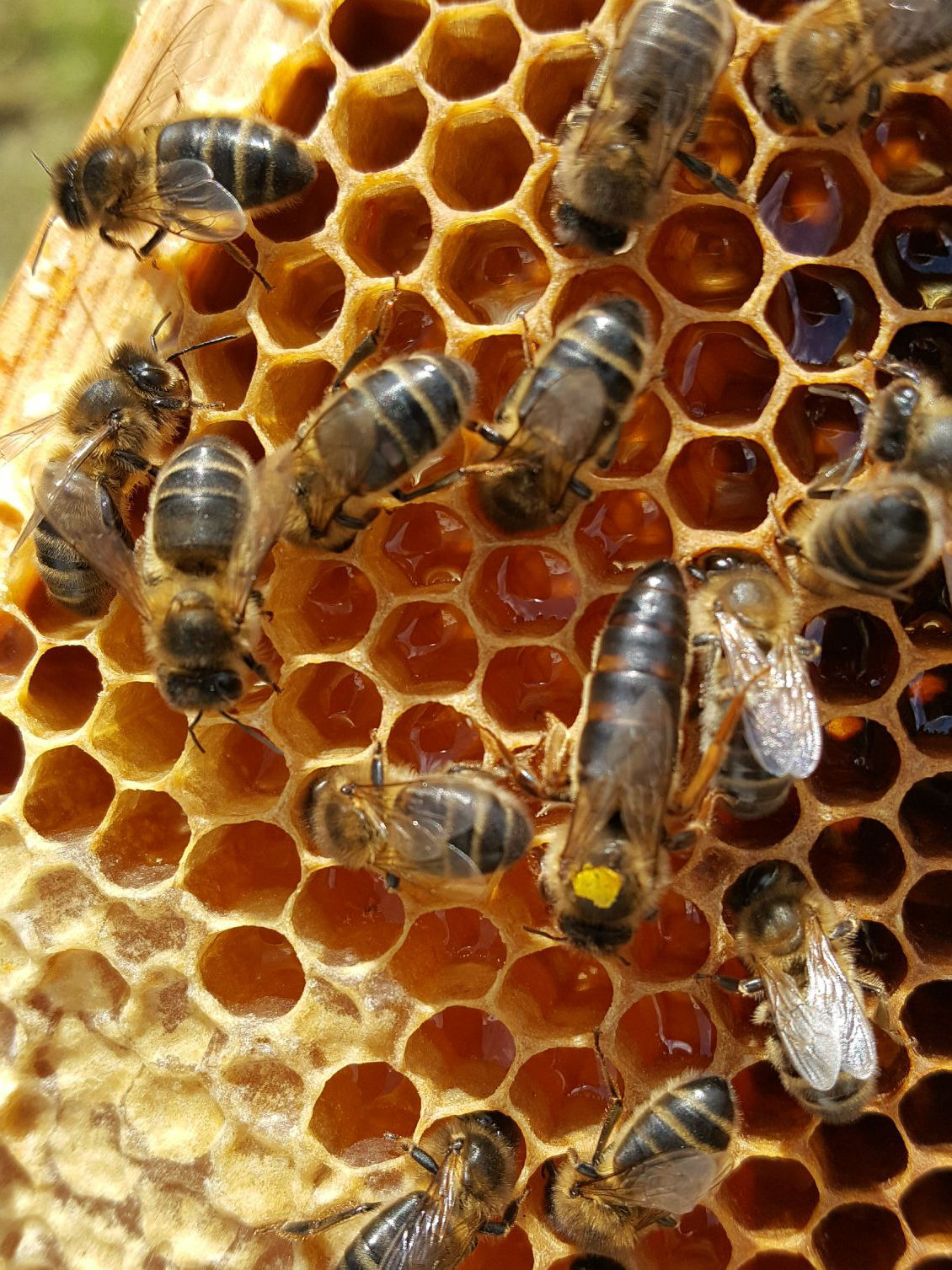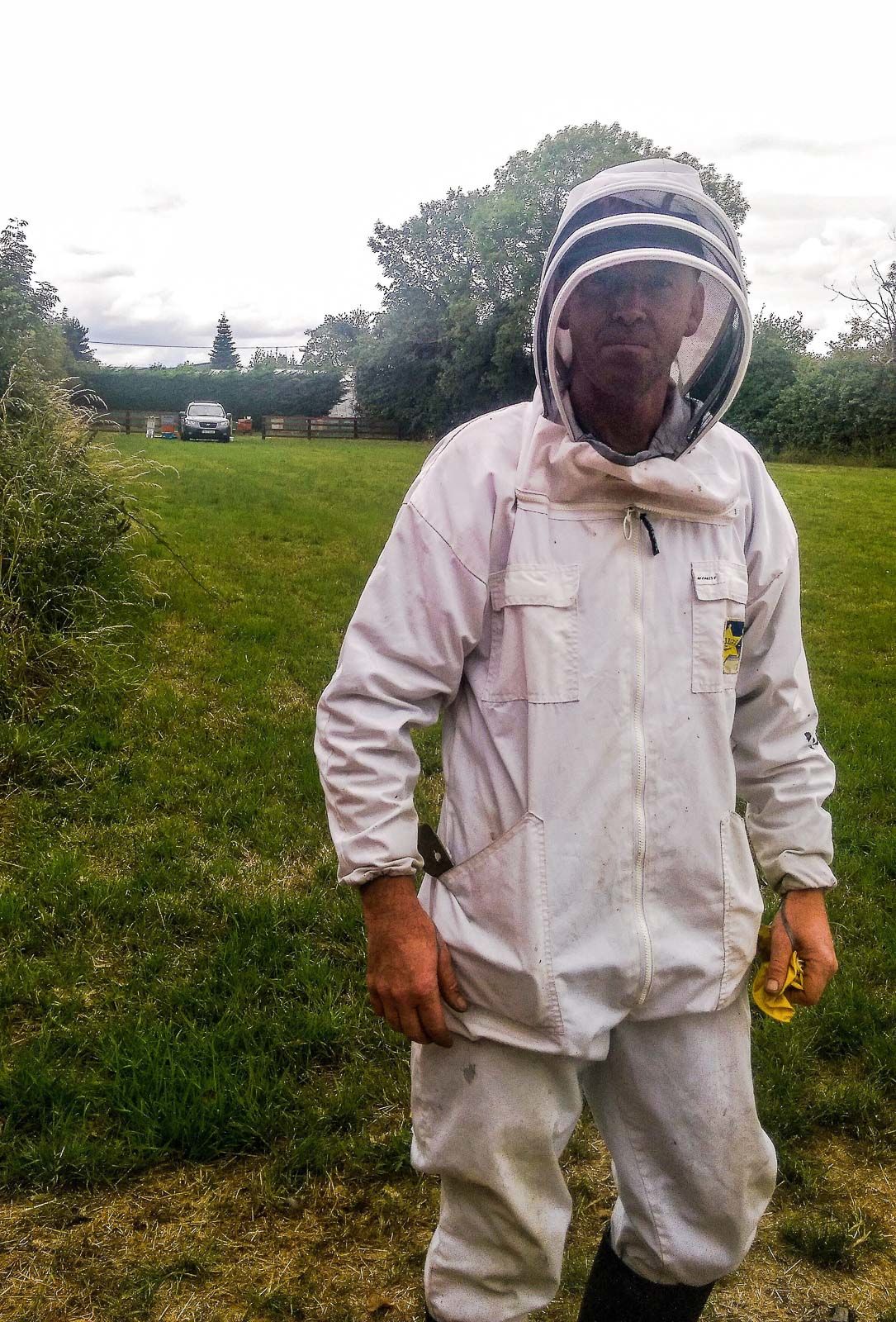
Ever wondered what really goes on in a hive? We met up with an Irish beekeeper who showed us how he tends his apiaries, how he collects the honey and told us everything about his very special bees in the beautiful Irish countryside.
For 25 years, Finbarr Lambert had a fascination for bees and the art of beekeeping and eventually took up the practise in 2013. He finds the process of managing hives, bringing on the bees and producing natural raw honey to be a perfect way to de-stress from his day job as a firefighter. He has two apiaries, one in the North and one in the South of County Dublin. We meet at the one in the North, in Fingal, home to Keogh's potatoes and Keogh's Kettle crisps. Finbarr manages this apiary for Tom Keogh who he met through the Pollinator of Ireland Plan and The Federation of Irish Beekeepers who are working together in a government-driven plan to improve biodiversity.
It was a tad tense to start with as the bees were in a ‘tetchy’ mood. It is a typical, overcast day in Ireland, the nectar is in full flow and at the beginning of July there are new queens in ‘situ’ and a full population inhabit the hives. On approaching the hives the bees go into ‘guard’ mode and a respectful retreat is made. Finbarr fills me in regarding his bees or the ‘cranky kids’ as he calls them.
The native Irish bee is a subspecies of the Apis mellifera, the European honey bee. They are generally a passive bee and have adapted well to Irish weather over thousands of years and fare well in the harsh winters, cool springs and wet summers as opposed to their hybrid counterparts. It has evolved a larger body and has the longest dark abdominal hairs of all the European races, to help keep it warm, and with a shorter breeding season to reflect the Irish summer. Finbarr, along with many Irish beekeepers, is keen to protect them. A threat to bee populations globally is the varroa mite but Finbarr’s bees have become resistant to this parasite. Finbarr doesn’t use antibiotics but the mite has diminished anyway and he says that has come from the bees taking care of it themselves.
Ireland is known for its beautiful green fields and farming dairy, beef and growing vegetables like potatoes. They do well due to the nutrient-rich grass and high rainfall throughout the year. The Irish Black bee suits Irish weather having evolved to withstand mild rainfall and mist and is even able to gather nectar regardless of the damp conditions. Finbarr’s bees forage on plants like hawthorn, dandelions, bramble and wildflowers and deciduous trees like sycamore and chestnuts.
Dipping into a jar of Finbarr’s honey is like soaking in the rays of lime tree blossom, so sweet and delicious is the nectar. It is a little cloudy, which is no bad thing as it shows it is carrying the pollen and all the vitamins and minerals raw honey provides. It is a golden yellow liquid honey that Finbarr puts through a simple filtering process to remove the cappings and wax, purely for cosmetic reasons, keeping it pure and raw from the hive to the jar and the spoon.
There are a variety of hives to choose from, the National, the Langstroth but Finbarr uses the Commercial. These provide a larger brood box that is good in winter as they allow for surplus amounts of honey (up to 30-40lb or around 18g) that get the bees through the winter (from the end of August) without the need to add sugar water.
Note: This practise is used by many other beekeepers giving bees sugar water to sustain them when there are not flowers available and means that too much honey has been taken from the hive. None of the Balqees beekeepers do this.
Finbarr takes great care of his bees and even has a queen born as far back as 2015 which is amazing as queens live up to a maximum of four years, or as Finbarr puts it, ‘for as long as they are good for’. A queen will produce up to 1-2,000 eggs a day through the summer. These are fertilised (males, drones) and non-fertilised (females, worker bees) bred as infertile females. The males don’t work but sit around all day waiting for the queen to come out to have a ‘chat’ with her. The drone’s main purpose is to mate during the summer and come the winter they are pushed out and got rid of when they become surplus to requirements and a drain on the colony. The worker bees gather nectar and do whatever needs to be done, it is the worker bees who make the decisions in the hive. The Queen may be the head of the colony but the worker bees are running the show and it is the workers who decide if they need a new queen when her laying subsides. They do this by changing the feed of the larvae in the first 4 to 5 days. She will be reared as a queen which is a fertile female that gets mated and the whole process starts again. Finbarr knows his queens and marks them with a dot of colour according to the year they were born, so blue for his 2015, white 2016, yellow 2017, red 2018 and green will be marked on his 2019 queens.
Ireland doesn’t produce large quantities of honey compared to its European counterparts. It’s a small island and the season is short (June-September) compared to other places in Europe that have 6 months to produce honey to last the year. When you think it takes one colony to produce 110 lbs (50g) of honey per year then producing honey commercially isn’t viable without planting crops specifically for honeybees and then concerns arise in the treatment and production processes on such a scale compromising quality over quantity. For Finbarr, beekeeping is a labour of love, it’s non-profit if you were to add up the hours he spends working with the bees producing the honey.


Beekeeping is a hobby, a passion and Finbarr gets a lot of pleasure as he sits, watches and nurtures the queens, manages the hives and mentors others. He is a member of the Fingal Beekeeper Association which offers support and encourages new beekeepers into the practice. “Some people like football, I like beekeeping” he says. Last year with 15 hives he produced 900 jars of honey and had no problem shifting them through family, friends and acquaintances. The word is out, the honey tastes great.
Other Honey Explorer posts you might like:
Found this interesting? Never miss a post – sign up for our regular newsletter packed with exclusive offers, recipes, health news and much more.
RiathSign up for exclusive offers, recipes and the latest raw honey news.